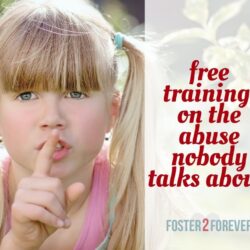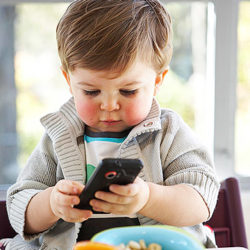The Connected Child: Bring Hope and Healing to Your Adoptive Family is a book I highly recommend for anyone who parents kids with troubled backgrounds, and should be required reading for all foster and adoptive parents. This book can be used as a continual parenting resource because it discusses just about any issue that a foster or adoptive parent may encounter. In this in-depth, comprehensive book summary, I outline the variety of topics that this book covers.
While The Connected Child examines behavior with a holistic approach; it discusses in detail how the trauma of your child’s past has affected brain chemistry, fear response, and sensory processing abilities of your child. Although the information in the book is based on research, it is presented in easy-to-understand language.
The Connected Child Book Summary
The Connected Child begins by showing the reader that there can be HOPE and HEALING in your child. By closely observing your child, showing compassion, and eliminating the traditional parenting techniques that can become obstacles to attachment, you can create a connected relationship with your child hurt by trauma. READ HOW HOPELESS I FELT
The Connected Child stresses the importance of a baby’s first years, and how the loss of a nurtured environment can affect a child for a lifetime. This even includes the baby’s environment prenatally, and not just exposure to drugs and alcohol. Even a pregnant mother’s stress can cause an influx of stress hormones into an unborn child that can cause changes in a baby’s brain development. The Connected Child dedicates a chapter on how stress affects the chemistry of the brain and the importance of nutrition. READ HOW EARLY NEGLECT STILL AFFECTS MY CHILD
The Connected Child includes solid, practical advice for a variety of behaviors that could be attributed to the trauma of a child’s past. The key is to decipher the behavior and the hidden message behind it. FEAR DRIVES A HURT CHILD’S BEHAVIOR. A parent can disarm this fear in order to meet the child’s need. READ HOW TO IDENTIFY YOUR CHILD’S EMOTIONAL TRIGGERS
Although a hurt child maybe safe in your home, due to their past trauma, a child may not FEEL safe. A parent’s duty is to create an environment of “FELT SAFETY” for the child. Building trust and reducing stress are the ways to create an environment of felt safety. READ HOW I DISCOVERED THE CONNECTION BETWEEN TRAUMA AND MISBEHAVIOR
Children from hard places may not have learned appropriate social interactions. Due to their fear and survival instincts, a child may act out, throw tantrums, or try to manipulate or control others around them. The Connected Child discusses ways that a parent can teach life values, such as respect and accepting the word NO. The parent must consistently model these life values by staying calm, actively listening, and offering praise and encouragement. READ ABOUT MY STRUGGLE WITH CONNECTION
The Connected Child emphasizes how the traditional way of parenting with punishment, such as using time-outs, can be counterproductive to attachment by encouraging isolation and shame. This book provides a number of useful parenting strategies that you can put to use immediately, along with examples of dialog and phrases you can use. The emphasis is on providing a respectful environment which begins with the parent’s being mindful in their response to misbehavior. Parents can also build connection by staying close during the child’s tough times. The parenting techniques include offering choices and compromises, allowing re-do’s, and having a unified front with your partner to avoid triangulation. An entire chapter is devoted to dealing with defiance. READ HOW TO USE A TIME-IN FOR DISCIPLINE
The key to parenting children from hard places is to nurture at every opportunity with positive engagement and to be proactive in situations which may be difficult for your child. The Connected Child acknowledges that there will be setbacks, but encourages parents to look at the overall progress your child has made. READ WHAT HAPPENED WHEN I TREATED MY CHILD LIKE A BABY
The Connected Child concludes by discussing the importance of parents to heal their past emotional wounds.
“There are many wonderful, responsible, capable, and self-sacrificing people who carry around unresolved traumas and wounds inside them, and as a result they are unready to give the deep, nurturing care that an at-risk child requires.”
The Connected Child has become a reference book that I pick up and re-read over and over because I will always glean yet another great parenting strategy and understanding as I struggle to navigate through trauma behaviors.
With the large amount of parenting tools and advice given, this book may feel overwhelming for someone just beginning their foster/adoption journey. However, the book has a very thorough index in the back to help you find the topic you are needing help with.
Disclosure: This article contains Amazon affiliate links which means I receive an itty bitty commission with no additional cost to you.





